Bolivian Pollera, Tupiza and road to Uyuni Salt Flats
The traditional skirt worn by many Bolivians - the pollera. The journey from Tupiza to the Uyuni Salt Flats Bolivia. South America Travel Centre...

Bolivia, the highest and most isolated country in South America, presents amazing extremes of scenery – from the altiplano and arid desert, to lowland Amazon rainforest, or the vast whiteness of the world’s largest salt flat to the soaring heights of the snow-capped Andes mountains. Relive centuries of colonial history as you wander the streets of La Paz, Potosi and Sucre, and observe the little-changed traditional Indian culture when you visit the market at Tarabuco. Let our team of specialists prepare for you a tailor-made itinerary to explore the wonders of Bolivia at your own pace, accompanied by private guides and drivers.
A private tour of Bolivia when combined with northern Argentina and Chile offers incredible diversity. Along with Bolivia’s powerful and varied scenery a highlight would have to be 3 or 4 nights exploring the Salar de Uyuni. Spend your time in Bolivia staying in boutique and rustic accommodation or enjoy a unique experience of staying in one of our properties made entirely from salt. Allow our Latin America specialists craft a journey in Bolivia that you will never forget.
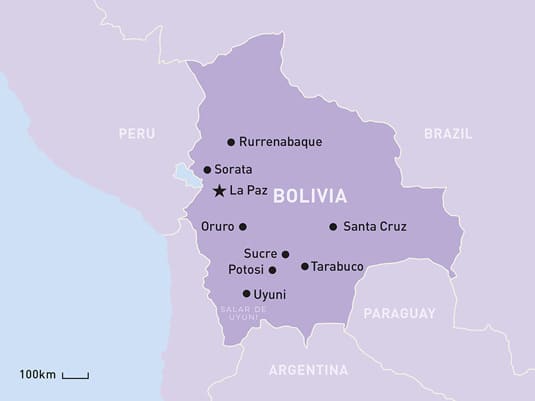
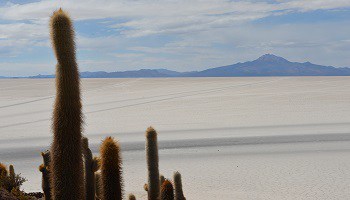
Bolivia’s most well-known attraction is the Salar de Uyuni (Salt Flats of Uyuni), a 10,000 km2 dazzling white landscape. The salt flats are formed by the evaporative process of meltwaters from the surrounding volcanic peaks that trickle into what is effectively a large ‘inland sea’. Over many thousands of years a crust of salt has formed that is thick enough to drive on (2-10 metres). Up to 200m of water lie beneath the salt crust as well as the world’s largest deposits of lithium.
There is little local rainfall to weaken the crust, although when it does rain (Nov to Feb) the mirages created by water-covered salt flats are like a surreal scene from a Salvador Dali painting.

The salt flats of Bolivia are spell-binding, magnificent, unique and should form part of any itinerary that heads into northern Chile, Argentina and, of course, Bolivia. A three night stay is a must. There are two simple, but beautiful, hotels constructed almost entirely from blocks of salt, cut from the surround salt flats. It can be bitterly cold and these hotels are are havens of warmth set on the edge of vast salt plains.
NOTE: We ask you understand the very remote location of these properties means that the food is simple, wholesome and of well prepared, but simple with limited options. For us the experience easily outweighs any of the limitations.
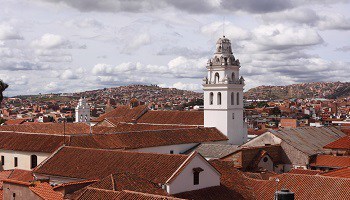
Sucre is a fine example of Bolivia’s wealthy colonial period and the architecture is one of the main attractions. Sucre, the official capital of Bolivia, is a very pleasant city with its many white-washed, terracotta-tiled, colonial buildings.
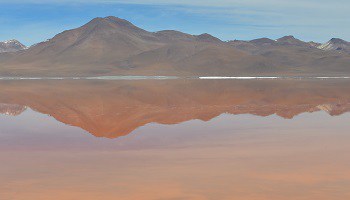
Eduardo Abaroa National Reserve is home to vicunas, rheas, Andean foxes and three species of flamingos; James, Andean and Chilean. But the real stars are the ever-changing colours of the lagoons (Laguna Colorada (Red Lagoon) and Laguna Verde (Green Lagoon).
Perfectly formed conical volcanoes form an amazing backdrop. Licancabur (5,900m another picture-perfect volcano) holds the Guinness World Record for the highest scuba dive, which was achieved in the lake in its crater. From Laguna Verde it’s only a 10-minute drive to the Bolivia/Chile border and an hour from there to the town of San Pedro de Atacama.
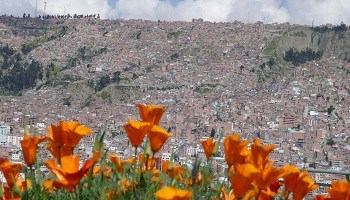
Set at an altitude of 3,636m, La Paz is Bolivia’s commercial capital and is the highest city of its size in the world. Founded in 1548, it lies in a natural basin surrounded by imposing snow-covered mountain peaks and dominated by Mount Illimani (6,402m).
Here you will find a cable car “Teleferico” that locals use on their daily commute. You may wish to take a ride to simply enjoy the beautiful views over the city. There are also many beautiful colonial buildings in La Paz as well as cobbled streets and typical Indian street markets.
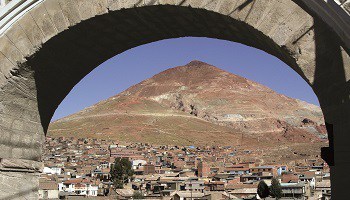
The ‘rich mountain’ or ‘Cerro Rico’ that towers over the city of Potosí once held the silver that lured Spanish Conquistadors here. Cerro Rico’s fascinating, and often harsh, history is a very interesting lesson as to some of the effects that colonization had upon the indigenous people of Bolivia. Although the silver is long gone, tin is still mined from Cerro Rico. It’s possible to tour the mines as well as the Casa Nacional de Moneda, a museum that once housed the royal mint.
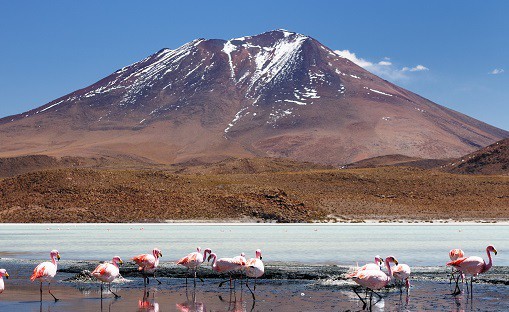
Set against the backdrop of snow covered mountains, this small saline lake – one of nine on the altiplano – is notable for a variety of high Andean waterfowl, particularly pink and white flamingos (mostly white because the algae that creates the pink colour in the birds is comparatively less in these waters), as well as wild vicunas in their natural habitat. You will pass this lake as you drive south across the Siloli Desert between San Pedro de Quemez and Ojo de Perdiz, on a journey from the Salt Flats heading towards Atacama.The demonstration continues for ten minutes until finally the horse returns to all fours still totally at ease.”

The celebrated Carnival of Oruro, a mining town on the altiplano 210km south of La Paz, has its origin in the ancient Uru people’s beliefs surrounding the festival’s two icons: the benevolent Andean Earth Mother, Pachamama (with a strong link to the Virgin Mary due to the festival’s religious connotations), and El Tio (Uncle) Supay, God of the Mountains, who transforms for this event into the Devil. The indigenous miners believe El Tio is the owner of the mine’s minerals and to avert his anger at their taking his precious metals and to ensure their continued safety, they placate him with dancing and gifts of food and beer. It is this appeasement of the devil that has attracted people to this particular festival for so many years.
The actual Carnival lasts 5 or 6 days (in February or early March) although the celebrations start much earlier and preparations begin throughout the country exactly 40 days before Easter.
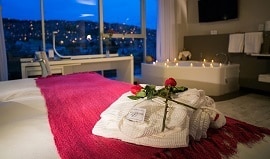
Stannum Boutique Hotel & Spa
La Paz, Bolivia
Top class design and the finest facilities. Usually located in a spectacular setting it may be an exclusive hotel in a meticulously restored historic building, or recognised as the leading property of an international chain.
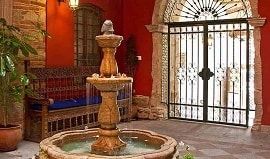
La Casona Hotel Boutique
La Paz, Bolivia
A perfect alternative to the big brand hotels:
exclusive and independently-owned properties with a smaller number of rooms and highly personalised services.
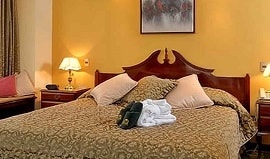
Camino Real Aparthotel
La Paz, Bolivia
High quality with an excellent room standard, a full range of facilities and first-rate service; may be a new property or regularly refurbished with attention to ongoing maintenance.
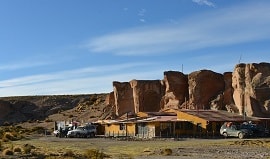
Hotel Jardines de Malku Cueva
Villamar, Bolivia
Many of South America’s finest experiences are found when visiting remote, less visited, areas. Jardines Malku Cueva is beautiful, simple, property built into a bluff on the road that links the Salt Flats to Eduardo Avaroa Andean Fauna National Reserve (famous for the red and gree lagoon and excellent wildlife) and eventually the Atacama desert in Chile.
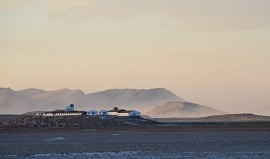
Hotel Luna Salada
Uyuni Salt Flats, Bolivia
Set on the edge of the Uyuni Salt Flats this comfortable property is a fabulous combination of ‘Salt Hotel’ and comfortable lodge offering a truly authentic experience. Recently refurbished the lodge/hotel has a range of rooms, all beautifully decorated and many with excellent views across the salt flats.
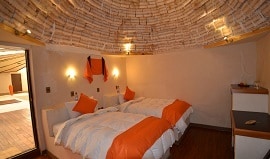
Palacio de Sal
Uyuni Salt Flats, Bolivia
Very good standard (sometimes not far below first class, or may just have been overtaken by new hotels), has a better range of facilities than Tourist, and is often in a better location.
Tourist-superior and tourist class accommodation is also available. For more information on the accommodation we offer, call 1300 784 794 or email contact@satc.com.au.
South America Travel Centre can look after all aspects of your holiday, including flights and travel insurance.
We start by asking you what your interests are and where you are interested in, when, for how long, what standard and style of accommodation (it can be a combination – for example you may wish to celebrate a special occasion while you’re away by staying in a very special property or place). Once we have a good understanding of just what you’re looking for, we can begin to create a holiday to meet your time and budget requirements and, most importantly, that will deliver interest and enjoyment in an experience to exceed your expectations.
Please book early. Many of the hotels, lodges and cruise vessels we recommend are relatively small. This exclusivity combined with high demand means they can be booked out up to 6-8 months in advance.
If you’re thinking of travelling during any major holidays like Christmas, New Year and Easter, or during any festivals, our advice is simply to book as early as you can, even 12 months or more, and we can add flights as soon as they become available.
Australian citizens do not require a visa to enter Peru. You will need to hold a valid passport and have a return ticket when you arrival. Visitors are allowed to stay up to 183 days in Peru.
It is strongly recommended that all travellers to Bolivia be vaccinated for yellow fever before commencing their trip.
Vaccinations are advised for common diseases like Hepatitis A and B, Typhoid as well as Influenza. There are no compulsory vaccinations.
We advise you to consult a Travel Doctor specialist prior to departure to assess any health risks in relation to your medical history and travel plans.
We have access to a wide range of airfares and have excellent relationships with our key airline partners. Our two main airline partners in Latin America are LATAM Airlines, QANTAS Airlines and Air New Zealand. We can also arrange internal flights for you within Latin America.
Irrespective of whether you book directly with us or with your preferred travel agent, we’ll request the details of all of your fights to ensure if there are any changes your transfers and other arrangements are adjusted accordingly.
June to October
You may encounter extremes of temperature – warm during the day and very cold at night – so it is best to pack for all seasons. Spring and autumn (April to early June and September to mid-November) usually have warm and sunny days with cold nights. Winter (June to August) is the dry season but is extremely cold (as low as –10°C at night).
Late November to March
Summer is the wet season but it is still possible to travel during these months and conditions will depend on the amount of actual rainfall that has occurred in any particular year.

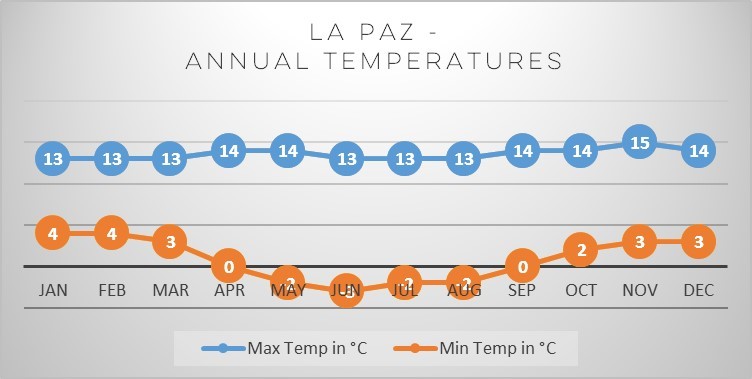
The traditional skirt worn by many Bolivians - the pollera. The journey from Tupiza to the Uyuni Salt Flats Bolivia. South America Travel Centre...